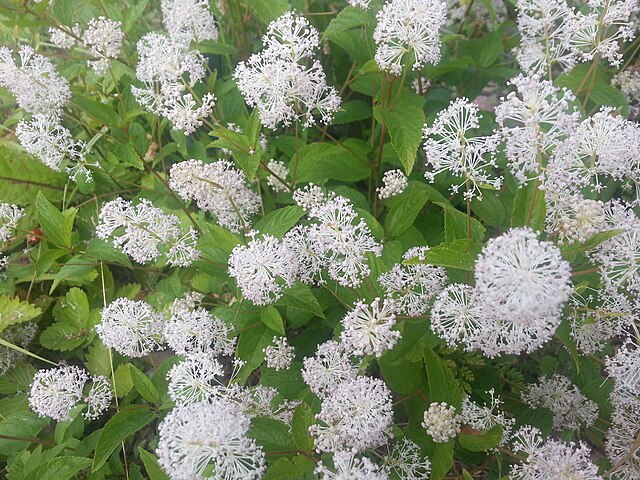Chapter 83 Ceanothus americanus; C. spp.
83.1 New Jersey tea; California lilac (multiple species and hybrids)

Flowers on a New Jersey tea shrub. Ceanothus is not well known as a landscape plant, and not recommended generally for bonsai, but flowering displays like this would make it an unusual addition to any collection. Link to original image.

California lilac blossoms. There are more than two dozen Ceanothus species that are native to the Pacific coast of North America. Many have been introduced into cultivation, though may be hard to locate on the Atlantic coast. Link to original image.
83.2 Soil: General Deciduous / Rich Conifer Mix
Ratio: 3 parts bark, 1 part grit
Add-ins: dolomitic limestone (~5 lbs/yd), Tree-Tone (15 lbs/yd)
pH: ~6.5 (slightly below neutral)
Moisture: prefers to be dry, and does not like humidity
83.3 Light
Routine: Full sun
Summer: unknown
83.4 Cultivation Notes
Free-blooming wild native of northern tier states. Blooms are white, or blue through violet.
83.4.1 Potting & Root Pruning
Unknown.
83.4.1.1 Top & Branch Management
Unknown.
83.4.2 Feeding
Unknown.
83.4.3 Pests & Problems
83.4.4 Winter Storage
Store in mulch outdoors. Try to place in a shaded area so buds do not break in a mid-winter warm spell. No other special precautions are needed.
83.5 Propagation Notes
83.6 Artistic & Styling Notes
83.7 Additional Information
83.7.1 Natural History
These shrubs are native to North America. Common names include New Jersey tea, Jersey tea ceanothus, variations of red root, mountain sweet, and wild snowball. New Jersey tea was a name coined during the American Revolution, because its leaves were used as a substitute for imported tea.